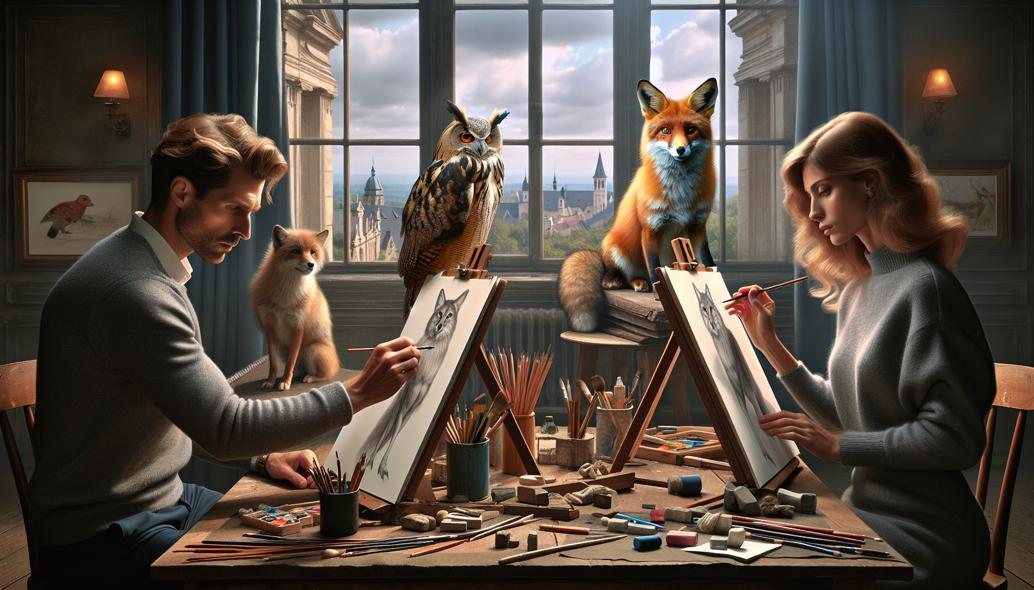How to Draw Realistic Animals: A Step-by-Step Guide
Unlock the secrets of drawing realistic animals with our step-by-step guide. Learn to capture lifelike fur, scales, and feathers with detailed instructions and tips. Dive in and bring your animal drawings to life!

How to Draw Realistic Animals: A Step-by-Step Guide
Drawing realistic animals can be a deeply satisfying endeavor for aspiring and experienced artists alike. With patience, practice, and the correct approach, you can create lifelike images that almost leap off the page. This comprehensive step-by-step guide provides detailed instructions to help you achieve realistic depictions of a variety of animals, from fur to feathers. Let’s dive in!
Tools and Materials You Will Need
- Graphite Pencils: Ranging from 2H (hardest) to 6B (softest) for different values and textures.
- Paper: High-quality drawing paper, preferably with a slight texture.
- Erasers: Kneaded and precision erasers for different purposes.
- Blending Stumps: For smooth transitions and shadowing.
- Reference Images: Quality photos that offer clear views of the animal you're drawing.
- Ruler: For accurate measurements and proportions.
Step 1: Select and Study Your Reference Image
The first crucial step is to select a high-quality reference image. Make sure the image is clear and has good lighting to observe the details. Study the anatomy, posture, and proportions of the animal. Consider the direction of light and how it affects the hues and shadows. Understanding your subject thoroughly will make the drawing process much smoother.
Step 2: Sketch Basic Shapes
Use a light pencil (2H) to sketch the basic shapes that will form the animal's framework. Break down the body into fundamental geometric shapes—ovals for the head, torso, and limbs, circles for joints, and triangles for the ears.
Step 3: Outline the Major Features
After you have the basic shapes in place, start outlining the major features of the animal. Pay attention to the anatomy and make sure the proportions are accurate. Use a slightly darker pencil (HB) to define the contours of the head, ears, legs, and tail.
Step 4: Add Details to the Face
The face is often the focal point, so it requires careful attention. Here’s a breakdown:
- Eyes: Draw the outline, paying particular care to the shape. Shade the pupils and add highlights for a lifelike gleam.
- Nose and Mouth: These features vary greatly among species. Observe closely and sketch accordingly, noting any unique textures.
- Ears: Add textures by drawing thin, directional lines that follow the shape of the ear.

Step 5: Add Fur, Scales, or Feathers
The texture of the animal’s skin is vital for realism. Here’s how to approach different types:
Fur
- Short Fur: Draw small, repetitive strokes, varying their length and direction.
- Long Fur: Use elongated strokes and layer them to create depth.
Scales
- Draw individual scales, each with a slight variation to enhance realism.
- Add subtle shading to suggest overlap and texture.
Feathers
- Contour Feathers: Create smooth lines that follow the body’s form.
- Plumage: Vary the length and shape for a natural look.
Step 6: Shade and Add Depth
Shading adds volume and makes the drawing pop. Use a range of pencils from 2B to 6B:
- Gradient Shading: Establish a light source and shade accordingly. Blend for smooth transitions.
- Contrast: Enhance the image by adding darker shades to shadowed areas and highlights where the light directly hits.
Step 7: Refine the Details
Refinement is key to a realistic finish. Small details like whiskers, individual hairs, scratches, and any unique markings should be added at this stage. Use an eraser to create highlights by lifting graphite from specific areas lightly.
Step 8: Review and Final Adjustments
Take a break and return to your drawing with fresh eyes. Compare it to your reference image, and make any necessary adjustments. Assess the balance of your tones, the accuracy of your proportions, and the realism of your textures.
Tips for Mastery
- Practice Regularly: Improvements in dexterity and observation come with consistent practice.
- Study Anatomy: Deepen your understanding of animal anatomy through books and online resources.
- Seek Feedback: Share your work with fellow artists or mentors for constructive criticism.
- Experiment with Tools: Different pencils, papers, and erasers can yield varied results; find what works best for you.
- Patience is Key: Realistic artwork takes time; don't rush the process.
Conclusion
Drawing realistic animals is a skill that anyone can develop with diligence and the correct methodologies. This detailed guide provides the foundational steps to get you started on your journey to creating lifelike animal drawings. Remember, practice and patience are your greatest allies. Happy drawing!
For additional resources, including step-by-step video tutorials and downloadable reference images, be sure to visit our other blog posts and subscribe to our newsletter. Until next time, keep sketching!
